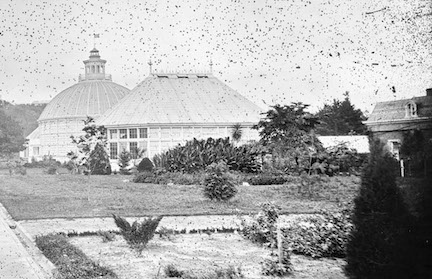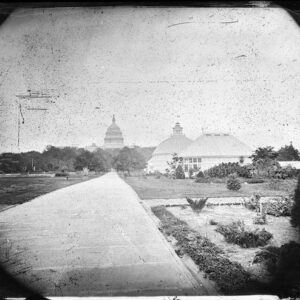Tag: US Botanic Garden (Washington DC)
 Wikipedia says: The United States Botanic Garden (USBG) is a botanic garden on the grounds of the United States Capitol in Washington, D.C.
Wikipedia says: The United States Botanic Garden (USBG) is a botanic garden on the grounds of the United States Capitol in Washington, D.C.
…The Columbian Institute for the Promotion of Arts and Sciences in Washington, DC first suggested the creation of the Botanic Garden in 1816. In 1820 it was given land by an act of Congress. The land was located west of the Capitol extending from First Street to Third Street between Pennsylvania and Maryland Avenues. The facility ceased to operate in 1837 when the society stopped holding meetings. However it was re-instituted in 1842 when the Wilkes expedition of the South Seas brought back a collection of plants.
In 1838, Charles Wilkes set out on the United States Exploring Expedition commissioned by Congress to circumnavigate the globe and explore the Pacific Ocean. During this trip (the “Wilkes Expedition”), Wilkes collected live and dried specimens of plants and was one of the first to use wardian cases to maintain live plants on long voyages. Wilkes returned in 1842 with a massive collection of plants previously unknown in the United States.
The dried specimens comprised the core of what is now the National Herbarium, an herbarium curated by the Smithsonian Institution’s National Museum of Natural History. The live specimens and seeds came to be housed in the Old Patent Office greenhouse, and were cared for there until 1850. At that time, a botanic garden was built to house the collection in front of the Capitol, where the Capitol reflecting pool is now located.
Abolitionist Photius Fisk conducted scientific exploration of minerals and plants. While he was U.S. Navy chaplain on the Frigate Raritan in South America and the Pacific he collected seeds and rare plants for the United States Botanic Garden. Some of the species he gathered were the vanilla plant, dendrobium, cattleya, epidendrum, stanhopea, and several other named and unnamed species. Most of the flowers were from Brazil. He also obtained the rare butterfly flower Oncidium Papilio from Saint Thomas which he carefully guarded. Photius Fisk kept careful notes of his observations of the plants. In February 1853, he immediately traveled to Washington and gave the plants to the superintendent and botanist of the United States Botanic Garden W. D. Breckenridge.
Showing the single result
